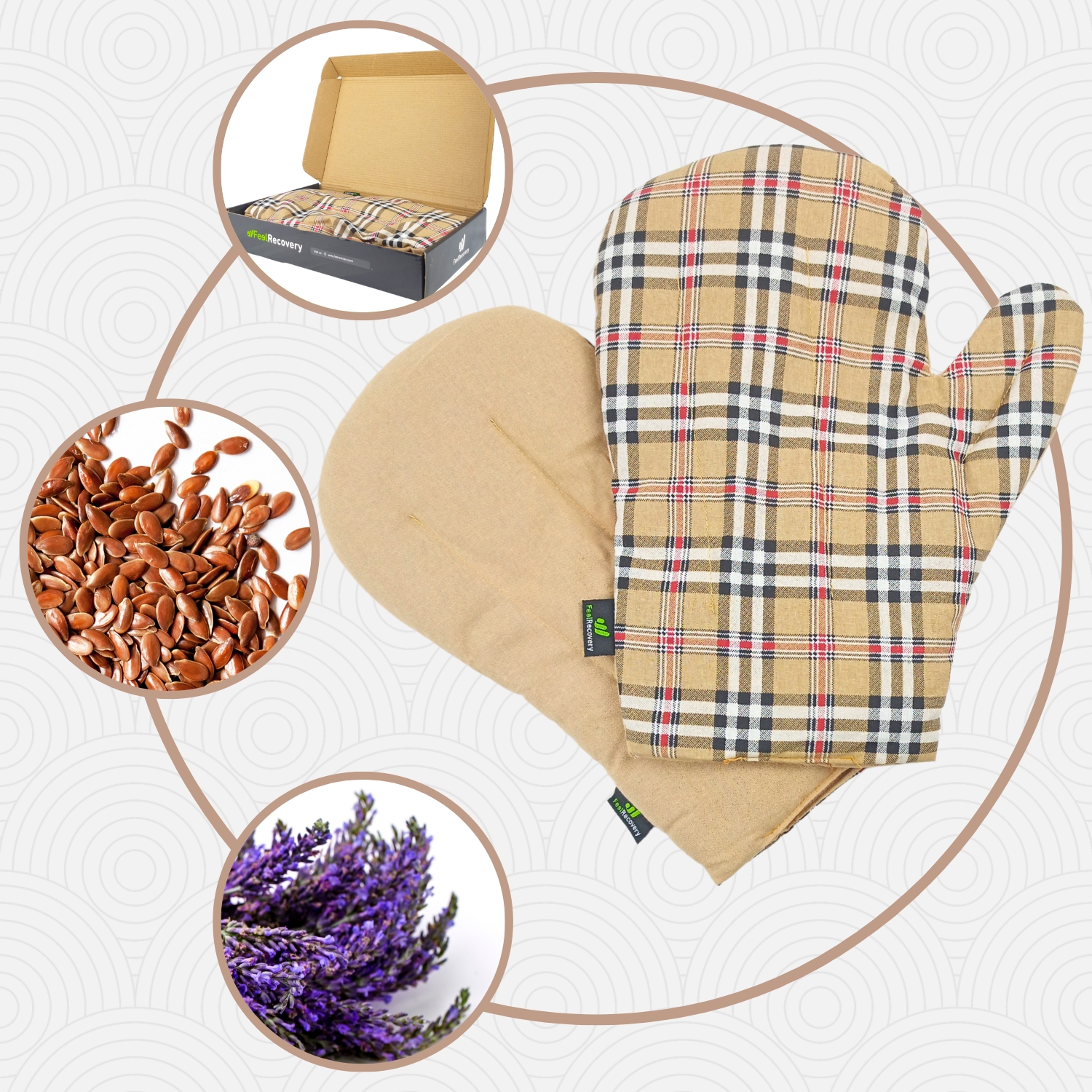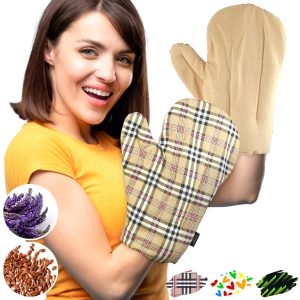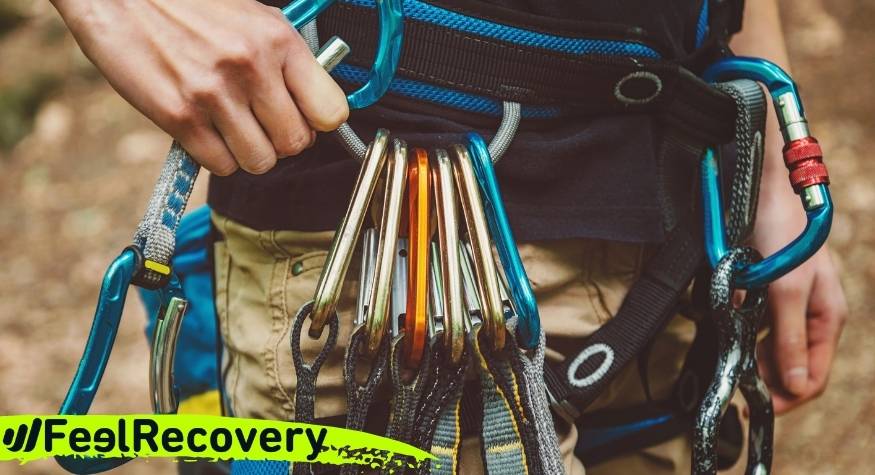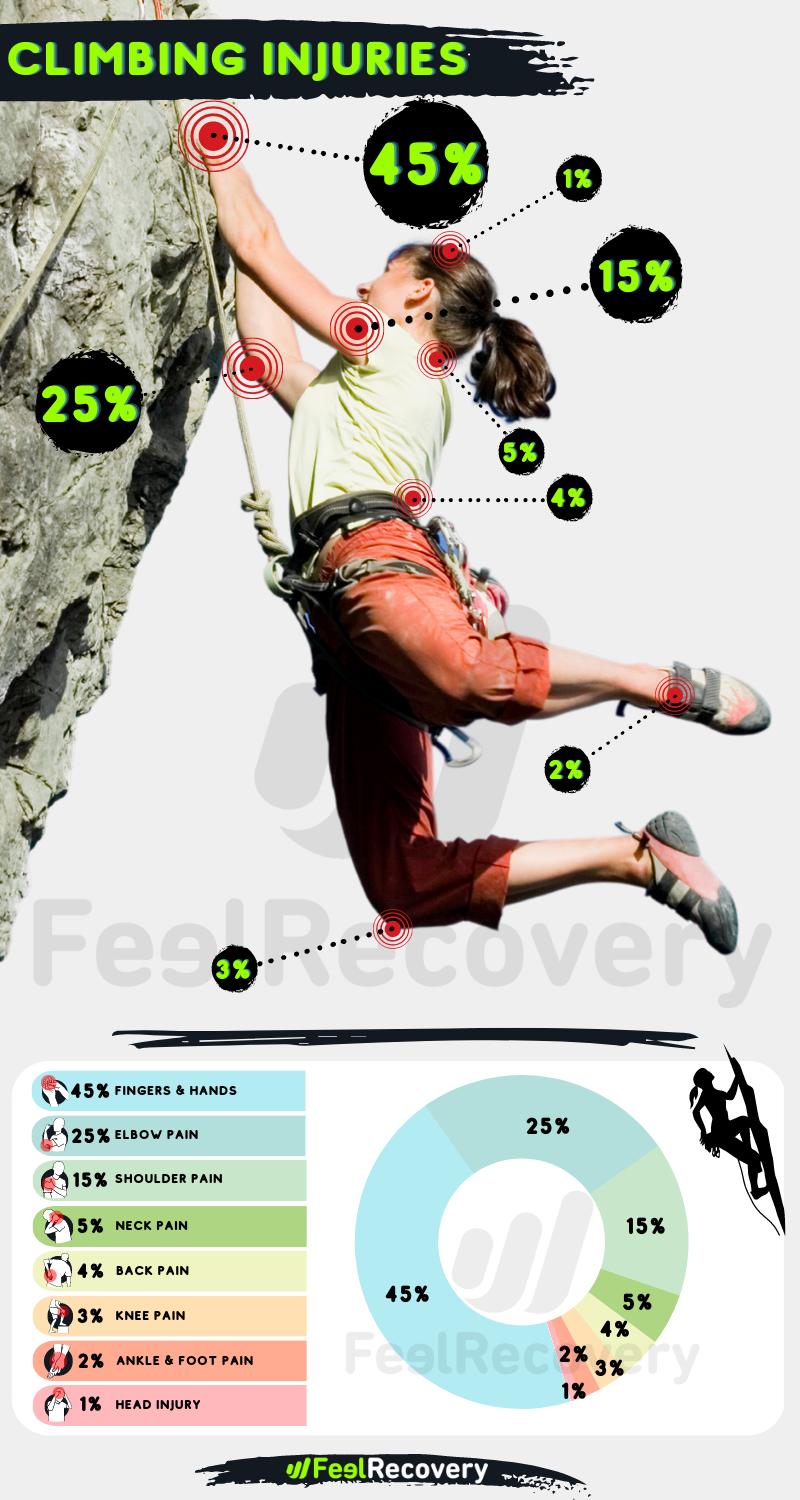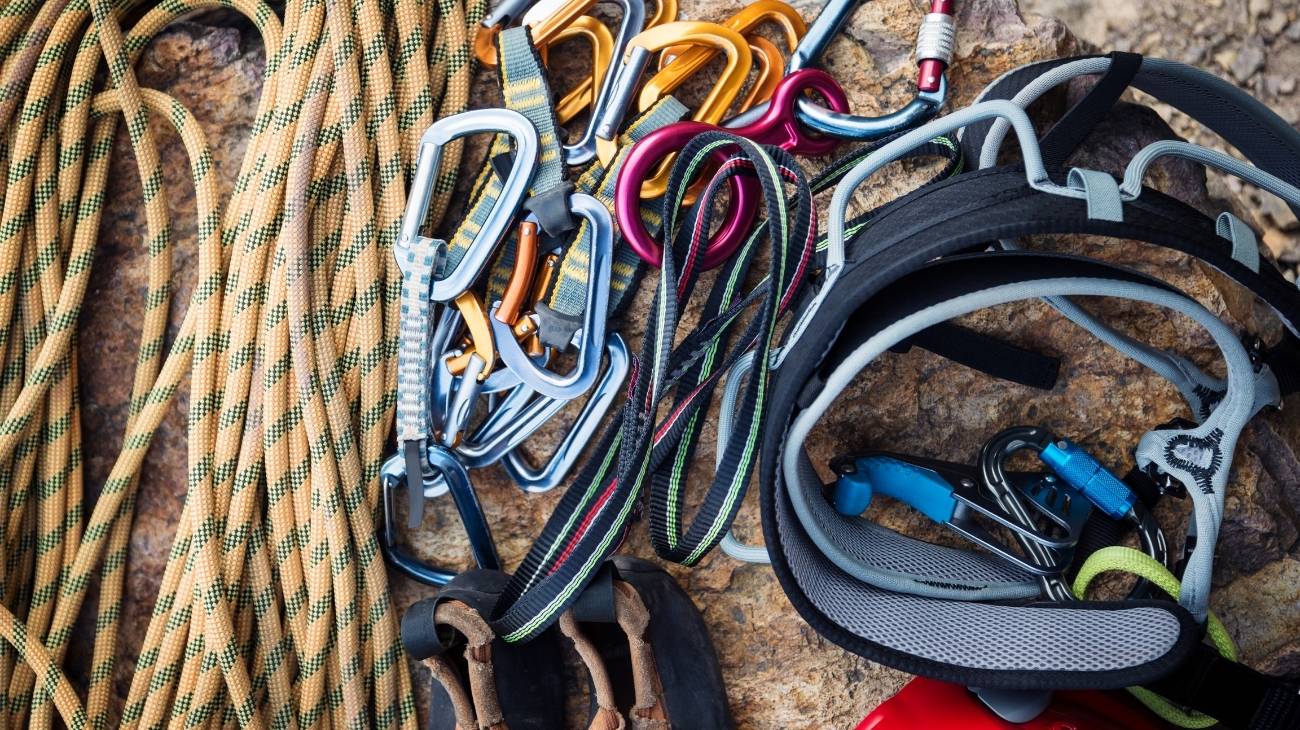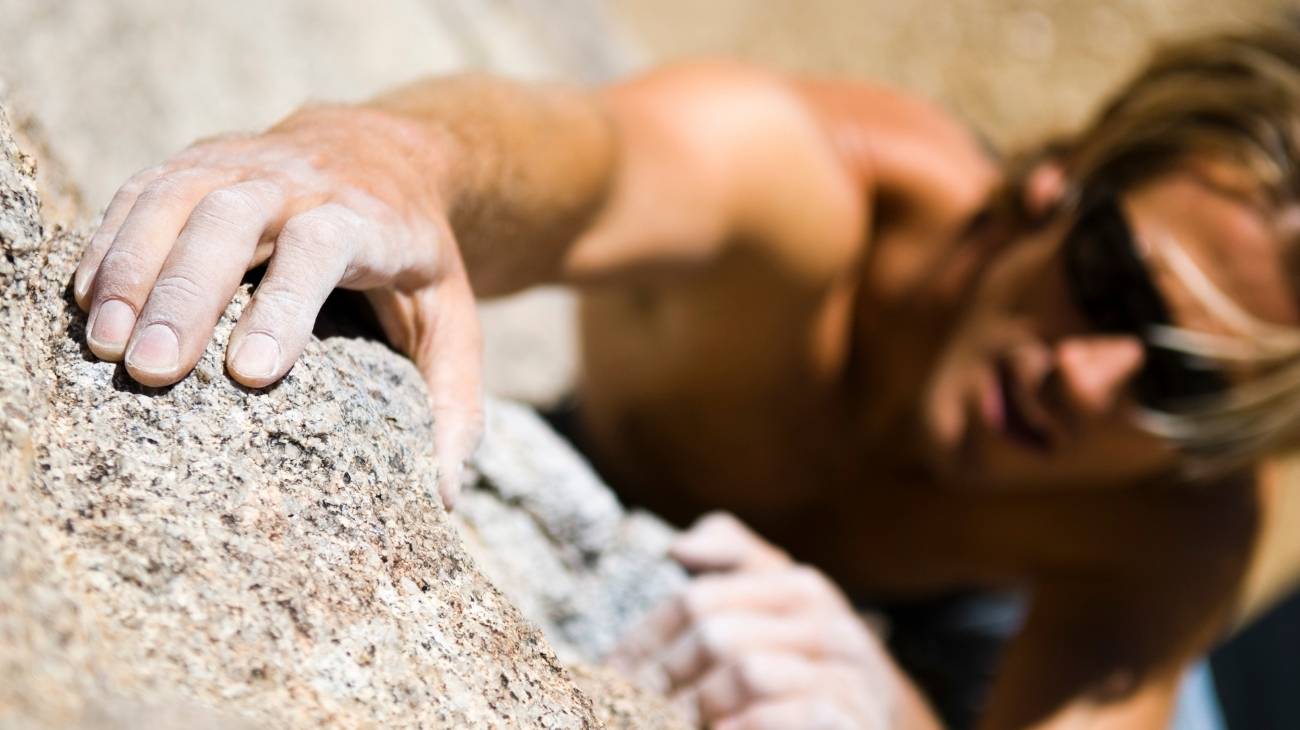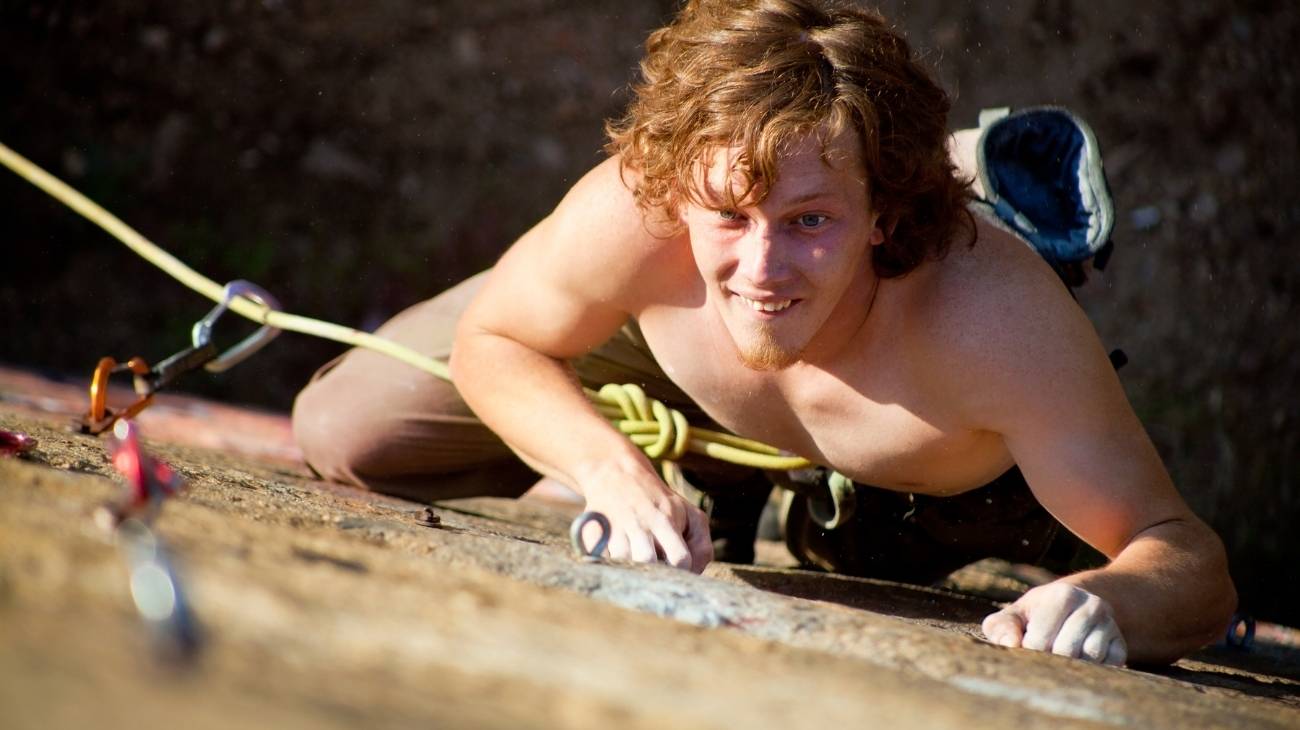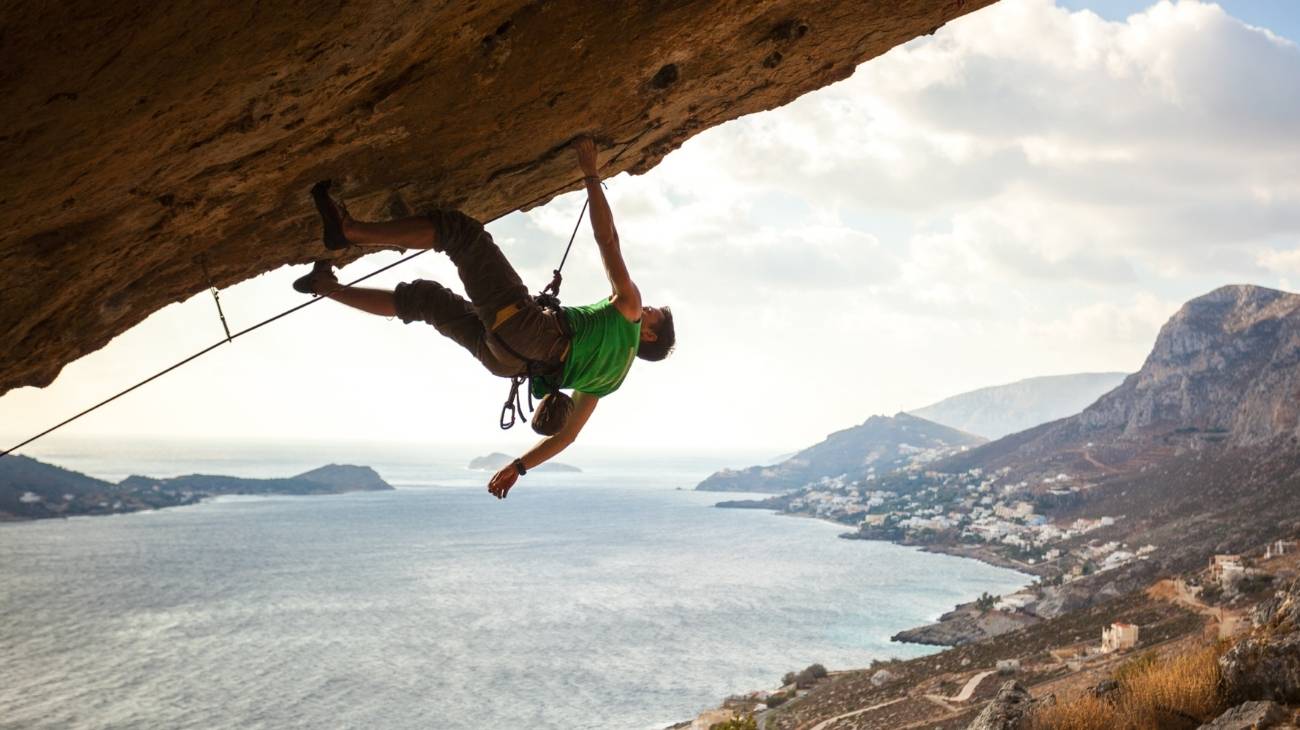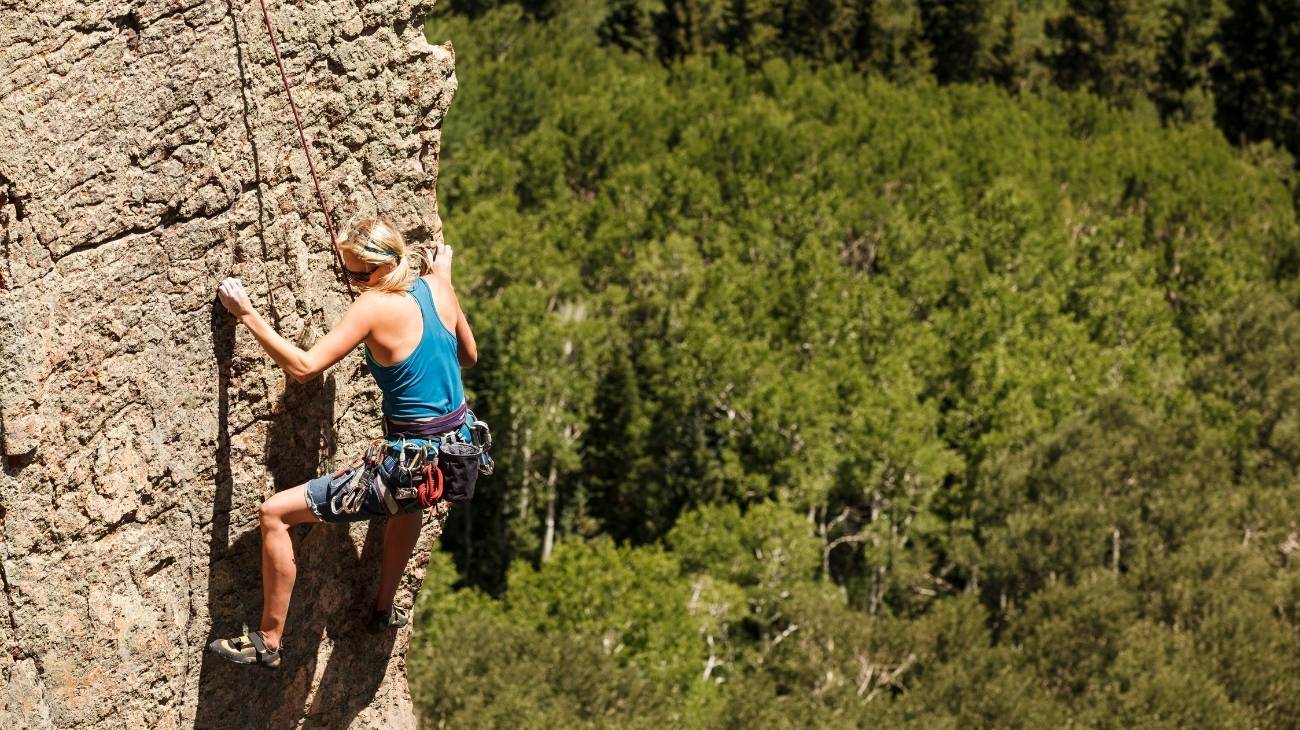- What are the most common types of rock climbing injuries?
- Best products for climbing injury recovery
- How to prevent injuries when rock climbing or doing mountain sports?
- How to apply the RICE therapy to treat first aid injuries in climbing?
- When should we see a specialist for the treatment of injuries in climbers or mountaineers?
Nowadays, rock climbing has gained new followers because it is a sport that is very much connected to nature. Despite being a very physically and mentally demanding sport, it is considered a moderate-risk discipline. This sport concentrates all its effort on the upper limbs, this being the most injured area.
Generally, climbing injuries are caused by overuse, and to a lesser extent by trauma to the joints. That's why we want to tell you about them so that you can learn how to prevent them and how to treat them with the RICE therapy and other alternative therapies. Join us to find out about them!
What are the most common types of rock climbing injuries?
Climbing involves a series of movements that require a great deal of effort on the shoulder, arms and legs. Due to the nature of these movements, overexertion or traumatisation of the upper limbs and knees occurs. There is greater effort and difficulty in the shoulders, while the wrists, hands and fingers concentrate the whole of the body's weight.
The most common injuries in this sport are:
SLAP injuries
The SLAP injury is considered to be an injury with a high incidence among climbers. It involves a partial or total tear of the glenoid impeller or fibrocartilage labrum. In climbing, it occurs when athletes are left hanging on one arm during a foot slip or fall due to slipping with the arm hyperextended. As a result, the athlete will experience diffuse pain at the level of the anterosuperior aspect of the shoulder, difficulty in raising the arm and instability, clicking and a considerable loss of muscle strength.
Rotator cuff tears and tendinitis
These are two very frequent injuries in climbers due to sudden movements that cause displacement of the humeral head. They occur due to repetitive movements generated by rock climbing, causing inflammation and micro-tears in the tendon fibres. These cause severe pain in the shoulder, inability to raise the arm above the head and joint popping. They are also often accompanied by injuries to the long portion of the biceps brachii and dislocations.
Shoulder dislocation or dislocation
They are very common in beginner climbers or those who do not have adequate development of the muscles and tendons that make up this joint. The lack of physical condition causes instability at the shoulder level, causing a partial or total displacement of the humeral head. In the event of a shoulder dislocation, there will be intense pain, deformity, inability to move the arm and in many cases swelling. The pain will improve considerably when the humeral head returns to its position.
Biceps injuries
The biceps brachii muscle is part of the structure of the arm joint. It is responsible for contributing to shoulder mobilisation, forearm rotation and elbow flexion. Tears and tendinitis at the level of the biceps brachii muscle are very frequent in climbers, especially in its long portion. Also, due to the overload generated by the repetitive movements that occur when climbing. In some cases, the climber will feel very intense pain at the level of the anterior portion of the arm. They may also experience swelling, limitation in raising the arm, rotating and flexing the forearm.
Subacromial bursitis
Subacromial bursitis is an inflammation at the level of the bursa that surrounds or envelops the tendons and ligaments of the rotator cuff of the shoulder. Its main function is to protect the tendons below the acromion from rubbing during movement.
Inflammation is secondary to microtrauma or overloading of the joint during sudden overhead movements. This causes enlargement of the bursa, swelling, mild pain and hypersensitivity to touch. Pain may increase with abduction movements or raising the arm.
Finger pulley injury
Climbers' fingers develop adaptations and high capacities due to the demands and different loads generated by climbing. The finger pulley system does not escape this reality, as it suffers from excessive stress and deterioration. These injuries are caused by holding or gripping with the fingers arched, supporting the body weight while rock climbing. The person will experience intense pain at the level of the underside of the injured finger accompanied by swelling and limitation of movement.
Tear of the triangular fibrocartilage complex
The triangular fibrocartilage complex is considered a very important structural component in the stabilisation of the distal radioulnar joint. It comprises a set of bones and ligaments that ensure the support and grip movements so important in climbing.
The main cause of tearing of the triangular fibrocartilage complex in climbers is due to direct trauma to the wrist or overloading. It is also very common in inverted grip positions that generate mechanical stress. The pain will be accentuated with grip and support positions at the wrist, experiencing stiffness and a feeling of instability.
Flexor tendon strain of the finger tendons
The flexor tendons of the fingers are responsible for distributing the force from the palm of the hand to the fingers. This generates the flexion movement, especially during gripping movements. Strain of the flexor tendons of the fingers occurs in climbers when sudden excessive loads occur, especially when slipping . This strain is caused by placing the fingers in extension, which, although it may be safer, could lead to serious injury. The most common symptoms are pain, swelling and limitation in flexing the fingers.
Sprained collateral ligaments of the fingers
The collateral ligaments of the fingers are the main retaining structures of this joint. They are involved in flexion-extension and interphalangeal joint stabilisation of the fingers. It is caused by trauma or overuse involving very forceful lateral movements. The climber will experience an increase in volume and functional limitation in performing activities. In more severe cases, bruising and complete functional impotence will be observed.
Tenosynovitis
Tenosynovitis is the most common injury among climbers due to repetitive strain on the wrists and hands. It consists of chronic inflammation of the tendon sheath of either the wrist or flexor tendons. Climbers tend to perform improper movements that lead to overuse injuries.
This can lead to mild to moderate pain at the palm or wrist. They are often accompanied by the inability to perform unnatural movements or extreme grips that cause further pain.
Meniscal tear
The knee is one of the most necessary structures in rock climbing because it allows flexion and extension of the legs. Inside the knee are the menisci, which are a kind of cushion that cushions the impact of movements. During this sport, the knees are often overloaded with weight, forcing them to make sudden twisting movements. The athlete will feel intense pain, an increase in the volume of the knee, joint stiffness, causing the joint to be limited in movement.
Knee sprain
The knee is made up of a series of ligaments that provide support, especially in extension, flexion and lateral movements. Movements such as intense knee hooks often lead to ligament strain and subsequent sprain. As a result, the collateral ligaments and anterior cruciate ligament are affected. Depending on the degree of the sprain, mild or severe symptoms can occur at the joint level. Among the most common are swelling, mild to moderate pain and instability of the knee.
Patellar dislocation
Dislocation or dislocation of the kneecap is one of the most common and worrying injuries in climbers. The patella is the triangular bone that fits over the joint of the femur and tibia. Its main function is to ensure the stability of that joint so that the person can flex or extend the leg. Dislocation is caused by direct blows, sudden movements, falls with forced twisting of the leg. This injury can cause severe pain, swelling, stiffness and limitation of some movements.
Knee bursitis
The prerotulian bursa is the most prone to inflammation, although the other patellar bursae can also become inflamed. In the practice of climbing, this occurs due to overloading of the movements at knee level and some traumatisms. This injury causes enlargement of the knee, redness, intense pain and functional impotence.
Hand or finger fractures
Fractures of the hands or fingers are the most serious injuries for climbers because they result in the inability to practise the sport. Although they are the most serious injuries, fortunately they are not the most frequent, representing only 17% of all injuries. They are caused by severe trauma or falls that result in partial or total breakage of the bones in the hand.
Stress or overloading of the wrist, hand and fingers is a risk factor. The characteristic sign of fractures is intense pain and an immediate increase in volume. It is usually accompanied by total or partial functional impotence and sometimes haematomas.
Knee fractures
Leg bones such as the femur, tibia, fibula and patella do not escape fractures in climbing. Although most of them are large and strong bones, any trauma or excessive movement can fracture them. Generally, the mechanism of these injuries is through falls. Fractures present with large deformities of the affected area, intense pain, increased volume, functional impotence and bone crunching.
Best products for climbing injury recovery
Bestseller
-
2 Elbow Compression Sleeve (Black/Gray)
$19.95 -
2 Elbow Compression Sleeve (Green/Navy)
$19.95 -
2 Elbow Compression Sleeve (Pink/Bordeaux)
$19.95 -
2 Knee Compression Sleeve (Black/Gray)
$19.95 -
2 Knee Compression Sleeve (Green/Navy)
$19.95 -
2 Knee Compression Sleeve (Pink/Bordeaux)
$19.95 -
2 Patella Knee Strap (Black/Gray)
$14.95 -
2 Patella Knee Strap (Green/Navy)
$14.95 -
2 Patella Knee Strap (Pink/Bordeaux)
$14.95 -
Acupressure Mat and Pillow (Black/Gray)
$49.95 -
Acupressure Mat and Pillow (Green/Navy)
$49.95 -
Acupressure Mat and Pillow (Pink/Bordeaux)
$49.95 -
Acupressure Pillow (Black/Gray)
$29.46 -
Acupressure Pillow (Green/Navy)
$29.46 -
Acupressure Pillow (Pink/Bordeaux)
$29.46 -
Foot Massage Roller for Plantar Fasciitis (Black)
$19.95 -
Foot Massage Roller for Plantar Fasciitis (Green)
$19.95 -
Foot Massage Roller for Plantar Fasciitis (Pink)
$19.95 -
Heating Pad for Microwave Classic Bottle Shaped (Hearts)
$19.95 -
Heating Pad for Microwave Classic Bottle Shaped (Oxford)
$19.95 -
Heating Pad for Microwave Classic Bottle Shaped (Sport)
$19.95 -
High Density Foam Roller for Muscle (Black/Gray)
$29.95 -
High Density Foam Roller for Muscle (Green/Navy)
$29.95 -
High Density Foam Roller for Muscle (Pink/Bordeaux)
$29.95 -
Ice Massage Roller Ball (Black)
$39.95 -
Ice Massage Roller Ball (Green)
$39.95 -
Ice Massage Roller Ball (Pink)
$39.95 -
Microwave Arthritis Gloves (2 Mittens) (Hearts)
$29.95 -
Microwave Arthritis Gloves (2 Mittens) (Oxford)
$29.95 -
Pack 2 In 1 Foam Roller High + Soft Density (Black/Gray)
$29.95 -
Pack 2 In 1 Foam Roller High + Soft Density (Green/Navy)
$29.95 -
Pack 2 In 1 Foam Roller High + Soft Density (Pink/Bordeaux)
$29.95 -
Shoulder Support Brace (Black)
$24.95 -
Shoulder Support Brace (Green)
$24.95 -
Shoulder Support Brace (Pink)
$24.95 -
Soft Density Foam Roller for Recovery (Black)
$29.95 -
Soft Density Foam Roller for Recovery (Green)
$29.95 -
Soft Density Foam Roller for Recovery (Pink)
$29.95 -
Trigger Point Massage Stick (Black)
$14.95 -
Trigger Point Massage Stick (Green)
$14.95 -
Trigger Point Massage Stick (Pink)
$14.95 -
Wrist Brace (Black/Gray)
$19.95 -
Wrist Brace (Green/Navy)
$19.95 -
Wrist Brace (Pink/Bordeaux)
$19.95
How to prevent injuries when rock climbing or doing mountain sports?
Climbing is a sport that involves maximum effort and concentration and requires the body to make a progressive muscular adaptation to its practice. Although it is true that this adaptive response leads to injuries, there are several techniques that can prevent them:
Warm-up
Warming up in any sport is essential to avoid muscle, tendon, ligament and joint injuries. It involves a series of exercises that increase the temperature in the muscles to prepare them for the intensity of the movements. This considerably improves the physical condition, coordination, balance and performance of athletes.
The correct way to warm up for rock climbing is for about 15 minutes as follows:
- Mobilisation of the joints: Ideally, the athlete should follow an order when mobilising the joints, which can be ascending or descending. The important thing is that no joint is forgotten. Rotating movements can be performed on all the joints, the correct thing to do is to try to make wide circles in both directions.
- Dynamic stretching: This type of stretching improves mobility, increases body temperature and improves performance. The idea is to wake up the muscle groups, especially the back, shoulders, arms and legs. In this case, a fixed position for more than 4 to 5 seconds is not recommended.
- Corrective exercises: It is important to focus on the muscles of the shoulders, legs and hands. These exercises will help to strengthen the muscles and increase the range of motion.
Cool down
After an intensity of rock climbing movements it is necessary to bring your whole body back to calm. This is achieved by lowering the intensity of the movements to reduce heart rate, breathing rate and muscle tension.
The correct way to do this is by:
- Static stretches: This type of exercise will allow for better relaxation of the muscles and should involve the shoulder, back, arm and leg muscles. The stretching position should be held for at least 10-15 seconds to reduce the possibility of twitching and injury.
Proper equipment
Climbing needs some basic elements to make it fun and very safe at the same time. It is important to have this equipment, but at the same time it is also necessary to be accompanied by professionals.
These are the most important accessories when climbing:
- Helmet: It is necessary to choose a helmet that is approved for climbing and has an adjustable suspension system and ventilation. It should be worn by both the climber and the rock climbing partner. It is essential to protect the head from any object falling from above.
- Harness: This is another of the most important safety elements, in addition to the helmet, because it attaches the climber to the rope. You should choose one that provides comfort and performance.
- Climbing shoes: These are considered the special shoes for climbers, as they have a non-slip sole that provides traction on the rocks. It is important to choose well-fitting cat feet and also, avoid getting them wet and use them as regular footwear.
- Carabiners: This is the safety structure that will allow many items to be anchored to the harness. It is important to have at least 3 available on the harness for handling descents, such as belayers, mounting of belays and rappels, etc.
- Magnesium bag: This is a very useful small bag for carrying magnesium in a very practical way on the climb. Remember that although magnesium is very useful for impregnating your hands and absorbing perspiration, it should be avoided as much as possible.
- Single rope: Are available in different materials and sizes. However, it is important to select a dynamic rope made of braided Nylon, composed of a core protected by a jacket. It should also have twice the distance you want to climb.
- Express belays: This is another of the safety elements made up of two carabiners, one straight and one curved, without a safety catch, joined by a strap. They are used as anchor points on the rope that goes on the route, the longer it is the more express is needed.
- Automatic belay devices: This is one of the most necessary safety elements in rock climbing. They are used by the partner who is belaying and is in charge of blocking the rope in the event of a fall.
Nutrition and hydration
In mountain sports it is necessary to maintain good nutrition to ensure adequate performance. Climbers have a high calorie requirement due to the demands of their sport. However, the calculation of calories will depend on the environmental and climatic conditions where the climbing will take place.
These are some of the recommendations for nutrition before, during and after rock climbing:
- Days prior to climbing: It is suggested to follow a food pattern 3 days prior to the rock climbing activity. In addition, a diet rich in carbohydrates with protein and low fat intake should be followed. You should eat between 3 and 5 meals a day to guarantee a good reserve of glycogen in the liver.
- Dinner the day before the climb: Dinner on this day should be rich in carbohydrates, especially those that take longer to digest. Examples of these are rice, potatoes, pulses, bread and pasta. These should be accompanied by a good portion of protein, which can be meat, chicken or fish.
- Breakfast on the day of the climb: This is one of the most important meals because it will break the fast. A light breakfast of coffee, juice, yoghurt or dried fruit is recommended.
- Food during the climb: It is important to have food that is high in energy, low in volume and light in weight. The ideal is to have energy bars that allow an adequate supply of glucose.
- Food after the climb: At this point the body is very fatigued and the climber will probably not be so hungry. If this is the case, you can wait until you feel hungry to have a recovery meal. This meal should be high in carbohydrates and low in animal protein.
Hydration is a key point to prevent decompensation and injury. Climbers should maintain a regular hydration of approximately 3 litres per day.
The key is to include plenty of water in the days before and during the climb, approximately 4 litres per day. Energy, isotonic and mineral salt drinks should be included to ensure proper water and electrolyte replenishment.
Fitness
Climbing is a sport that defies gravity. For this reason, athletes must be aware of the amount of force they need to apply in their practice. There must be correct physical and mental preparation involving the development of certain muscle groups to avoid injury.
Climbers seek to have the lowest possible body weight with the greatest possible strength, this is achieved by alternating stages of maximum strength training with endurance training, in order to improve both physical capacities. Proper technical training will ensure correct execution of movements without risk of injury.
Recovery therapies
Recovery therapies are considered to be a set of techniques used to prevent sports injuries. They allow an adequate recovery of the body's tissues, especially after intense training:
- Sports massage: This is a series of massages focused on relieving overloads, considered one of the most effective techniques in most cases. The massages improve blood flow and rid the body of toxic substances that cause inflammation.
- Use of hot and cold therapies: The use of hot and cold contrast therapies promotes better blood flow. This ensures faster tissue repair and reduces the risk of overuse injuries.
- Use of compression garments: Compression clothing can be worn during training to allow a better tissue fit and avoid injury. In addition, compression ensures better venous return and adequate blood circulation to the tissues.
- Use of acupressure therapies: This therapy comprises a series of finger pressure techniques based on acupuncture. With it, pressure is applied to the painful points to release the accumulated energy. In this way, an energetic and therefore also physical recovery of the organism is achieved.
- Use of thermotherapy and cryotherapy: Thermotherapy is an excellent technique to help relieve muscle tension by relaxing the tissues. Cryotherapy, on the other hand, is used to reduce inflammation in the muscles and to reduce post-training pain.
How to apply the RICE therapy to treat first aid injuries in climbing?
Climbing is a sport that is often practised in natural environments. When a major injury is sustained in these environments, it is ideal to apply first aid techniques such as the RICE therapy. It consists of a series of steps that are designed to prevent injuries from becoming more complicated. The RICE therapy was updated by the PRICE therapy.
If you find yourself in a situation of distress, follow the steps below:
- Protection: In the event of any injury during rock climbing, the best thing to do is to protect the affected area. In this way, you will prevent the injury from worsening and complicating the condition. It is important to use any type of immobilisers such as functional bandages, orthoses or any joint support.
- Rest: It is best to start a period of relative rest for 24 to 48 hours. It is important not to exceed this time to avoid the appearance of stiffness at the level of the injured area. Rest implies avoiding active movements that compromise the injured area but allows mobilisation of the rest of the structures.
- Ice: This consists of applying ice to the injured area to reduce pain and inflammation. However, avoid placing it directly on the skin to avoid cold burns. Exposure times of 20 minutes every 2 hours for 48 to 72 hours.
- Compression: Compression by means of an elastic bandage will limit the appearance of oedema and haemorrhages at tissue level. However, care must be taken when applying the compression bandage to avoid over-compressing blood flow. It is best if the elastic bandage allows the fingers to slide easily underneath it.
- Elevation: Finally, don't forget to elevate the affected area to further help reduce oedema and pain. It is best to elevate the affected area 30 cm above the level of the heart to ensure better venous return.
When should we see a specialist for the treatment of injuries in climbers or mountaineers?
It is important for climbers to recognise the body's warning signs to determine whether an injury requires specialist assessment. In the case of acute and serious injuries, the warning signs are as follows:
- Severe pain: Severe pain should be instantaneous at the time of injury. Depending on its intensity, it may cause dizziness, sweating and even hypotension
- Volume increase: Severe injuries such as fractures or ruptured ligaments, muscles and tendons cause a significant increase in volume quickly. If there is an instantaneous increase in volume, a specialist should be consulted.
- Joint instability: Any injury that causes joint instability requires urgent assessment by a doctor.
- Inability to perform movements: It is important to emphasise that this is not a limitation to certain movements, but a total impossibility to move the injured area.
Chronic injuries tend to progress more slowly:
- Continuous pain: If it is a continuous pain that does not improve. Sometimes it may disappear during the first few hours of the day, but will worsen with activity. In many cases the pain interferes with daily life and prevents sleep.
- Bulging: If the bulging does not improve over time, nor does it respond to certain physical anti-inflammatory and analgesic measures.
- Redness: Any ongoing pain that is accompanied by swelling and redness should be assessed by a specialist.
- Stiffness: Stiffness is another alarm bell for climbers and mountaineers to watch out for. This characteristic is part of severe cases of overload and joint deterioration.
References
- Rooks, M. D. (1997). Rock climbing injuries. Sports Medicine, 23, 261-270. https://link.springer.com/article/10.2165/00007256-199723040-00005
- Cole, K. P., Uhl, R. L., & Rosenbaum, A. J. (2020). Comprehensive review of rock climbing injuries. JAAOS-Journal of the American Academy of Orthopaedic Surgeons, 28(12), e501-e509. https://journals.lww.com/jaaos/Abstract/2020/06150/Comprehensive_Review_of_Rock_Climbing_Injuries.5.aspx
- Jones, G., Asghar, A., & Llewellyn, D. J. (2008). The epidemiology of rock-climbing injuries. British journal of sports medicine, 42(9), 773-778. https://bjsm.bmj.com/content/42/9/773.short
- Backe, S., Ericson, L., Janson, S., & Timpka, T. (2009). Rock climbing injury rates and associated risk factors in a general climbing population. Scandinavian journal of medicine & science in sports, 19(6), 850-856. https://onlinelibrary.wiley.com/doi/abs/10.1111/j.1600-0838.2008.00851.x
- Haas, J. C., & Meyers, M. C. (1995). Rock climbing injuries. Sports Medicine, 20, 199-205. https://link.springer.com/article/10.2165/00007256-199520030-00006
- Maitland, M. (1992). Injuries associated with rock climbing. Journal of Orthopaedic & Sports Physical Therapy, 16(2), 68-73. https://www.jospt.org/doi/abs/10.2519/jospt.1992.16.2.68
- Neuhof, A., Hennig, F. F., Schöffl, I., & Schöffl, V. (2011). Injury risk evaluation in sport climbing. International journal of sports medicine, 32(10), 794-800. https://www.thieme-connect.com/products/ejournals/abstract/10.1055/s-0031-1279723
- Woollings, K. Y., McKay, C. D., & Emery, C. A. (2015). Risk factors for injury in sport climbing and bouldering: a systematic review of the literature. British journal of sports medicine, 49(17), 1094-1099. https://bjsm.bmj.com/content/49/17/1094.short
- Addiss, D. G., & Baker, S. P. (1989). Mountaineering and rock-climbing injuries in US national parks. Annals of emergency medicine, 18(9), 975-979. https://www.sciencedirect.com/science/article/abs/pii/S0196064489804639
- Schöffl, V., & Winkelmann, H. P. (1999). Accident statistics at" indoor climbing walls". Sportverletzung Sportschaden: Organ der Gesellschaft fur Orthopadisch-traumatologische Sportmedizin, 13(1), 14-16. https://europepmc.org/article/med/10407959








































